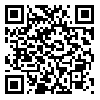Volume 8, Issue 20 (8-2021)
2021, 8(20): 81-104 |
Back to browse issues page
Download citation:
BibTeX | RIS | EndNote | Medlars | ProCite | Reference Manager | RefWorks
Send citation to:



BibTeX | RIS | EndNote | Medlars | ProCite | Reference Manager | RefWorks
Send citation to:
taefi S, ahmad aryan N. A Semiotic Analysis of the Poem “... And I Had Cried” by Wasef Bakhtari Using Riffaterre’s Theory. Journal title 2021; 8 (20) :81-104
URL: http://jls.khu.ac.ir/article-1-1941-en.html
URL: http://jls.khu.ac.ir/article-1-1941-en.html
1- Allameh Tabatabayi University , taefi@atu.ac.ir
2- Alberoni University
2- Alberoni University
Abstract: (4493 Views)
A researcher, lyricist, and a modernist, Wasef Bakhtari is regarded as one of the leading figures of contemporary Persian literature in Afghanistan. He is more known as a poet who writes difficult-to-understand poems, and his language is full of ambiguity and complexity. Therefore, in the present study, based on the semiotic theory of “Michael Riffaterre” and using qualitative content analysis and the retroactive reading approach, the ungrammaticalities, accumulations, descriptive systems, semantic transformations, and minimal semantic units in the poem “... And I Had Cried” by Bakhtari were determined and the elements that were the external signified of the signifiers inside the poem were introduced. The matrix scattered throughout the whole poem was obtained and its semantic structure was clarified. Riffaterre’s semiotic theory seeks to help the reader – by transcending imitative and exploratory reading and resorting to retroactive reading – go beyond the imitative layer of the text and enter the world of its signs, pursuant to which the structure of meaning in symbolic and ambiguous poems can be identified. The findings of the study show that the language of Bakhtari’s poetry is more complex than that of his contemporaries, but through various theories, including Riffaterre’s semiotic theory of poetry, it is possible to well penetrate the inner layers of meaning in his poetry and understand its semantic structure.
References
1. اوحدي¬اصفهاني، علي (1371) «سخني دربارة ادبيات معاصر دري در افغانستان». ايران¬شناسي. سال چهارم. شمارة 3: 586-601.
2. باختري، واصف (1395) حاشيه¬هاي گريزان از متن. به¬کوشش ناصر هوتکي. کابل: عازم.
3. برکت، بهزاد، و طيبه افتخاري (1389) «نشانه¬شناسي شعر: کاربست نظرية مايکل ريفاتر بر شعر «اي مرز پرگهر فروغ فرخزاد». پژوهش¬هاي زبان و ادبيات تطبيقي. دورة اول. شمارة 4: 109-130.
4. پاينده، حسين (1387) «نقد شعر آي آدم¬ها سرودة نيمايوشيج از منظر نشانه¬شناختي». فرهنگستان. دورة دهم. شمارة 4: 95-113.
5. پاينده، حسين (1388) «نشانه¬شناسي شعر (نقد نشانه¬شناختي شعر«زمستان»). شعر گوهران. شمارة 21 و 22: 165-183.
6. تودوروف، تزوتان (1392) نظرية ادبيات (متن¬هايي از فرماليست¬هاي روس). ترجمة عاطفه طاهايي. تهران: دات.
7. خراساني، شجاع¬الدين (1394) شعر معاصر دري. چاپ سوم. کابل: اميري.
8. شميسا، سيروس (1384) کليات سبک¬شناسي. ويراست دوم. تهران: ميترا.
9. فروغ، خالده (1390) گام بي¬توقف. کابل: برگ.
10. قويم، عبدالقيوم (1395) مروري بر ادبيات معاصر دري. چاپ ششم، کابل: سعيد.
11. کاظمي، محمدکاظم (1387) کليد در باز (رهيافت¬هايي در شعر بيدل). تهران: سورة مهر.
12. کالر، جاناتان (1388) در جستوجوي نشانه¬ها. ترجمة ليلا صادقي و تينا امرالهي. ويراستة فرزان سجودي. تهران: علمي.
13. گيرو، پير (1380) نشانه¬شناسي. ترجمة محمد نبوي. تهران: آگه.
14. مکاريک، ايرنا ريما (1385) دانش¬نامة نظريه¬هاي ادبي معاصر. ترجمة مهران مهاجر. چاپ دوم. تهران: آگه.
15. نبي¬لو، عليرضا (1391) «کاربرد نظرية نشانه¬شناسي مايکل ريفاتر در تحليل شعر ققنوس نيما». پژهش¬هاي زبان¬شناختي در زبان¬هاي خارجي. دورة اول. شمارة 2: 81-94.
16. Riffaterre, Michael (1983) Text Production. 1st ed. New York: Columbia University Press.
17. Riffaterre, Michael (1978) Semiotics of Poetry. 1st ed. Bloomingston: Indiana University Press.
Send email to the article author
| Rights and permissions | |
 | This work is licensed under a Creative Commons Attribution-NonCommercial 4.0 International License. |







